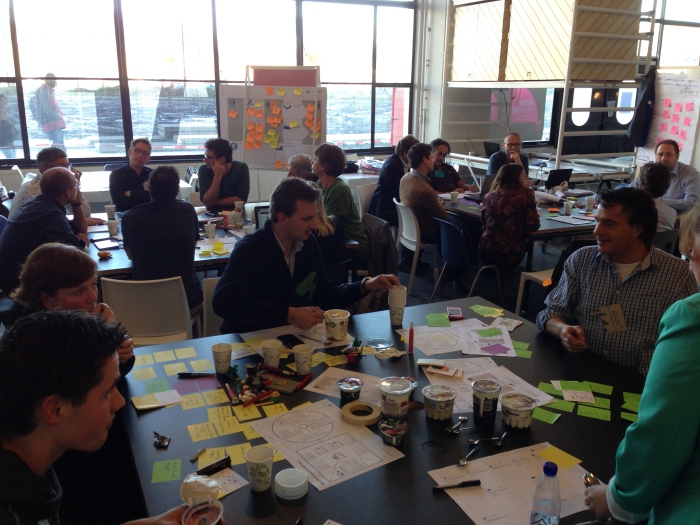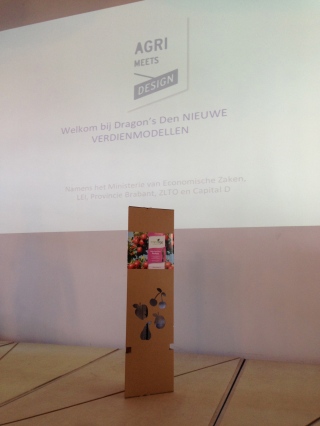I would like to share an observation I’ve made on the first Agri meets Design event, which took place during this year’s Dutch Design Week. Overall, the event has achieved a fresh, tangible perspective for the encounter of agriculture and design, which looks very promising. Yet despite this promise, I also have a concern with regards to inherent tendencies in both agriculture and design, which need to be addressed before the connection can really be made to flow.
Agriculture is an engineering-dominated arena, where existing decision making settings, and existing technology all too easily guide solution development. The new perspective brought by design has opened up for a more exploratory mindset: a big achievement! Most notable example of this from the event is the case of the Polderhack, where open data on food and agriculture was mashed into prototypes for applications addressing interesting use cases.

Despite this achievement in opening up a closed conversation, design is not without its own defaults. Through listening to various people during the Agri meets Design event, and in attendance of a few other side events, I see that design tends to limit itself to the space of opportunity/problem definition: the space of art and invention (projects like the Solar Sinter). Yet, real impact lies in completing the chain of development to defining solutions for implementation and adoption, ie. innovation.
I see this as an unaddressed part of the “meet”. If it isn’t addressed then I suspect an emerging law of social physics will tend to kick in in this space: Polarization caused by engineers staying on one side of the equation, whilst designers stay on the other. (this problem was aptly brought into real world terms by this goat farmer (in Dutch @1m:16)
In order to materialize the gains from the crossover between agriculture and design, I thus think there is a requirement for a new chain of collaboration between agricultural engineers and designers, so that thoughts from the space exploration can be transferred to results in the space of execution. Perhaps a design challenge for next year. I’d be happy to participate!

